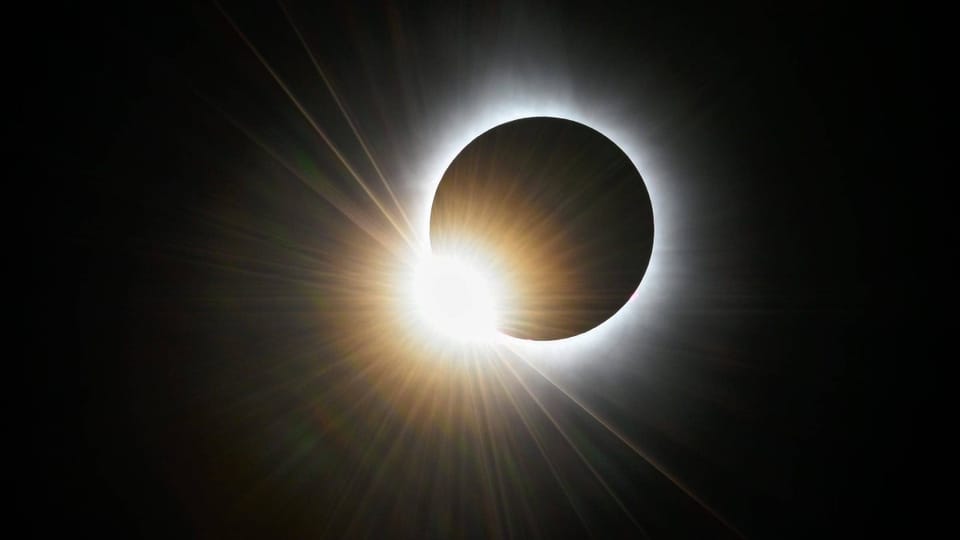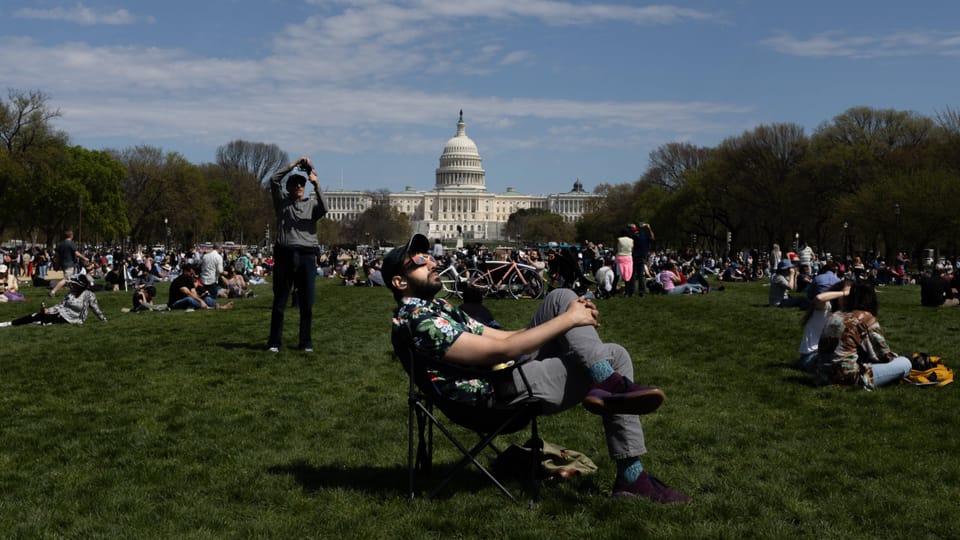Contents
The natural spectacle made Monday a very special day in North America. Millions of people observed the rare phenomenon. A review.
The solar eclipse in Mexico, the USA and Canada turned day into night for a few minutes on Monday. The moon moved in front of the sun.
Legend:
A total solar eclipse is a rare event: the last one in the USA took place in 2017. It was last seen in Mexico in 1991 and in Canada in 1979.
AP Photo / Eric Gay
Millions of people stocked up on solar eclipse glasses to watch the rare spectacle.

Legend:
On Monday, the spectacle could be seen from Progressive Field in Cleveland, shortly before the Cleveland Guardians’ home baseball game against the Chicago White Sox.
AP Photo / Carolyn Kaster
The uneven and cratered surface of the moon allowed the sun to shine through in some places while not being visible in others. This meant that seconds before the total solar eclipse entered, the last rays of the sun appeared particularly intense.

Legend:
Scientists had been preparing for the event for months. The US space agency Nasa examined the solar eclipse using aircraft and balloons, among other things.
IMAGO/USA TODAY Network
Starting over the Pacific, the umbra moved over northern Mexico over the course of the day, crossed the USA from Texas northeast to Maine, touched southeastern Canada and ended over the North Atlantic.

Legend:
Thousands of people watch the solar eclipse during the Solar Eclipse Festival on the National Mall, hosted by the Smithsonian National Air and Space Museum in Washington DC.
IMAGO / Middle East Images
Millions of people in the USA had been preparing for the natural event for months and planning parties to watch the sky together.

Legend:
Many of the people tried to get a good view of the rare phenomenon. Like here on the Empire State Building in New York.
IMAGO/ZUMA Wire
It wasn’t a normal day: some children had no school, shops were closed for a short time and hotels were fully booked.

Legend:
Many children had no school on Monday. Others were able to observe the natural phenomenon outside with their class.
Jake May/The Flint Journal via AP
A total solar eclipse only occurs every one to two years. The last one took place in the USA in 2017. The last one was observed from Mexico in 1991 and from Canada in 1979.
Swiss people who want to observe a total solar eclipse from home will have to be patient. It was not until September 3, 2081 that the “black hole” in the sky could be seen from Switzerland.

Legend:
The next solar eclipse for the USA and Canada is not announced until 2044, and for Mexico not until 2052. In Switzerland you even have to wait until 2081.
AP Photo / Carolyn Kaster
Elon Musk shared on X a video of the solar eclipse captured from Earth orbit by his space company SpaceX’s Starlink satellite.
